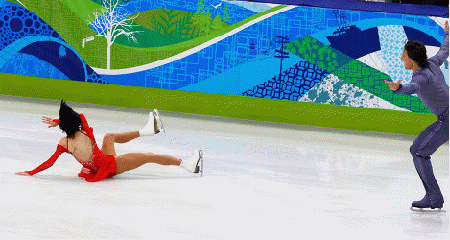Why Ice Is Slippery
When a skates moves on ice, they experience very little friction. This is strange, because most solids sliding past enough other produce a large amount of friction. The reason is that a thin film of water between the skates and the ice acts to lubricate the skater's motion. It used to be thought that the cause of this thin film of water was the pressure exerted by the pressure, since increasing the pressure lowers the melting point of ice.

The same phenomena is displayed in regelation. Calculations show however that the pressure exerted by the ice skater would lower the melting point of ice by about one tenth of a degree, while skating remains possible up to several degrees above zero. The pressure explanation also fails to explain why someone wearing flat shoes also finds ice slippery.
Experiments have shown in fact, that down to very low temperatures indeed, the surface atoms of ice looks much like they do were they in the liquid form. Later experiments have thrown the effectiveness of this layer into doubt however.
It is now believed that the reason for the film of water is the work done against friction by the skater as they move. Part of this work becomes internal energy of the ice, which melts.